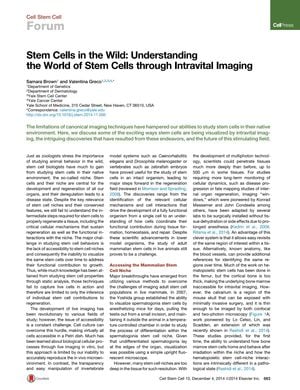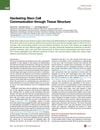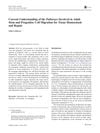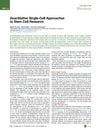Stem Cells in the Wild: Understanding Stem Cells Through Intravital Imaging
December 2014
in “
Cell Stem Cell
”
stem cells intravital imaging stem cell niche hair follicle hematopoietic stem cells spermatogonia bone marrow intestinal crypt disease progression cancer radiation therapy optogenetics organ regeneration malignancy live imaging stem cell environment hair follicle niche blood stem cells intestinal stem cell niche cancer treatment radiation treatment light-controlled genetics organ repair cancer development

TLDR Intravital imaging helps us better understand stem cells in their natural environment and could improve knowledge of organ regeneration and cancer development.
The document from 2014 discusses the use of intravital imaging techniques to study stem cells within their native environments in live animals, overcoming limitations of traditional imaging methods. It highlights the visualization of stem cells, such as spermatogonia in mice and hematopoietic stem cells in bone marrow, and the importance of the stem cell niche in regulating cell fate, with examples including hair follicle and intestinal crypt niches. The paper also notes the role of intravital imaging in understanding disease progression and treatment effects, such as in cancer and radiation therapy. It suggests that future research will benefit from advancements in imaging technology and specific labeling of stem cells, as well as from achieving spatiotemporal control of signaling pathways, possibly through optogenetics, to better understand stem cell dynamics and fate decisions in vivo. The combination of live imaging and new technologies is expected to enhance our comprehension of biological processes, including organ regeneration and the early events leading to malignancy.





